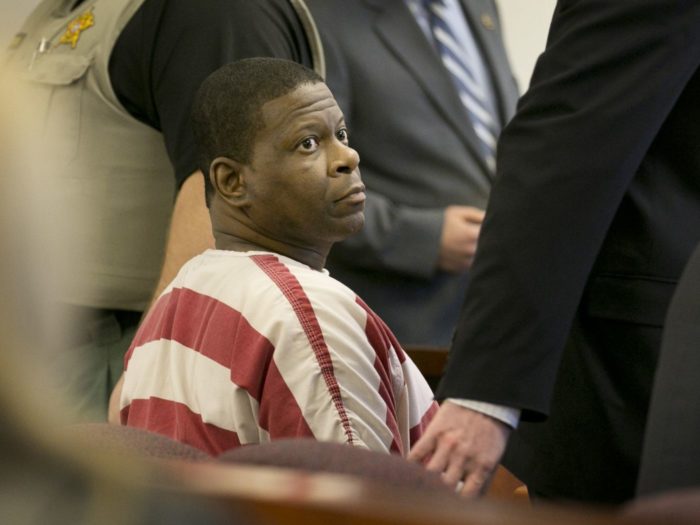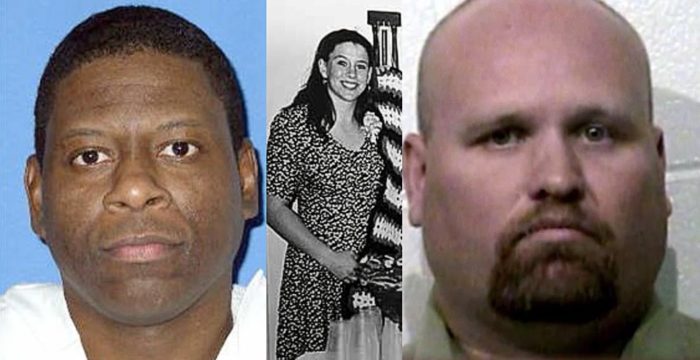By Kazi Islam & Hadia Miah
The reemerging rape and homicide case in which Rodney Reed was implicated and convicted became controversial in many respects: from the way it was initially handled, to the final ruling on the case. Reed’s legal situation was further complicated by the argument of whether or not any convict should be facing capital punishment . This ethical issue became a major factor in the case because Reed’s execution date was approaching in November of this year (2019).
Many people began arguing that this was a case of “racial profiling” once new evidence concerning another suspect arose . . . and especially after discovering that the jury responsible for the final verdict against Reed was all white. The mass-media became involved in proving Reed’s innocence by spreading awareness of his situation as a way to address the routine racial injustices inherent to America’s justice system. However, such messages may have painted a distorted image of Reed in people’s minds, leading them to take action without knowing all the facts.
Who is Rodney Reed?
Rodney Reed is a 51-year-old black man who was convicted for the 1996 Bastrop, TX abduction, rape, and murder of Stacey Stites on circumstantial evidence. He was scheduled for execution on Nov. 20th, but the Texas Court of Appeals has issued a stay of execution due to overwhelming support gathered through a petition against his execution because of the discovery of new evidence pointing to the victim’s fiance, Jimmy Fennell.
What Happened?
Stacy Stites was living with her fiance, Jimmy Fennell, who was a Bastrop police officer. Stites was working at a grocery store, and was scheduled to work a 3:30 a.m. shift on the 22nd of April. When she was absent for her shift, a co-worker informed the police. Her body was later discovered on the side of the road during the same day. She had been raped and strangled.
Rodney Reed became a suspect a year after the initial investigation when police identified the DNA on Stites’s body as his. At the time of his becoming a suspect, Reed was already arrested and charged with the kidnapping, beating, and attempted murder of Linda Schlueter.
The police began further investigating the Stites’ case because of the similarities between the Stites’ and Schlueter’s murders. Police already had Reed’s DNA from another alleged rape, and matched it to the DNA found on Stites’ body.
New Evidence
The overwhelming support that Rodney Reed has received is valid considering how badly Black individuals are typically treated in the court system. Plus the sudden uproar around new evidence that pointed towards a white police officer surely caught the media’s attention.
Reed’s legal team states that the evidence compiled against Reed (like the fact that the murder weapon has never been tested for DNA evidence) creates a flawed case. What solidified the mass media’s views against Reed was Jimmy Fennell (the fiancée’s confession to Stite’s murder, because he: “had to kill his n****r- loving fiance”.
This statement seemed to confirm that there had been an ongoing relationship between Reed and Stites which could explain the DNA evidence found on her body, and convinced people that rape was not involved.
Previously Fennell was accused of rape by a woman he detained while working as a police officer in Georgetown. Moreover, he also pleaded guilty to kidnapping and improper sexual activity with another woman while she was in police custody, for which he was sentenced to 10 years in prison.
Is Reed Really Innocent?
People were quick to believe in Reed’s innocence given the information that was presented to them through celebrities. But to many people’s surprise, there was more information relevant to this case than was immediately made public. After much advocating for Reed, many people later expressed regret after finding out that Reed had evidently raped other women, but was not convicted for any of these previous crimes despite obvious DNA evidence.
This information was not publicized to the mass media, and by the time many of Reed’s defenders found out, they had already signed the petition against his execution. Although many signed thIs petition solely because they do not support the death penalty no matter what a criminal has done, people who only discovered this extra information about Reed after signing were not happy about it, and felt betrayed. it can be argued that due to the prosecution of the Stites case instead of the other rape cases, Reed is now facing the opportunity to integrate back into society, something he does not deserve because of offenses he has committed against many other women, such as Linda Schlueter.
In addition to potentially being freed despite other crimes he has allegedly committed, Reed cannot now be tried on these other cases. Because they were used as evidence for another trial (the Stites case) where he may be found innocent, the data supporting these prior offenses became inadmissible to be brought up in court against him again.
American comedian, actress, disc jockey, recording artist, and radio personality, Amanda Seales, now claims that she signed the Reed petition while uninformed of Reed’s previous crimes, and thus feels that she has “failed her followers.” She now encourages people to do their own research before lending their names and support—pro or con—to major causes.

